Wizards takes us to the fabled realm of Dragonlance – with more dragons than you can dragonshake a dragonstick at. What’s in here? Some good stuff. Is it worth your attention? Maybe.
Foreword – Why the hiatus?
Skip past this for the TL;DR summary. In May of 2021, I wrote a review for Van Richten’s Guide to Ravenloft and in that review I was pretty lukewarm on the book’s 10,000 foot view approach to its content and worried that it would not stand the test of time with fans.
Despite being proven right in that assessment, even just a year later, some hardcore fans were exceedingly vocal about how wrong I was, how terrible my review was, how and when I should die, etc.
I’m not too proud to say it made reviewing content for the community on my own time seem self-destructive, so I just stopped.
Since then, several books have released, some of which I haven’t even opened, but enough people are confused about what Dragonlance is and who it is for that I decided I’d knock the dust off and write another review to help people sort through this content storm.
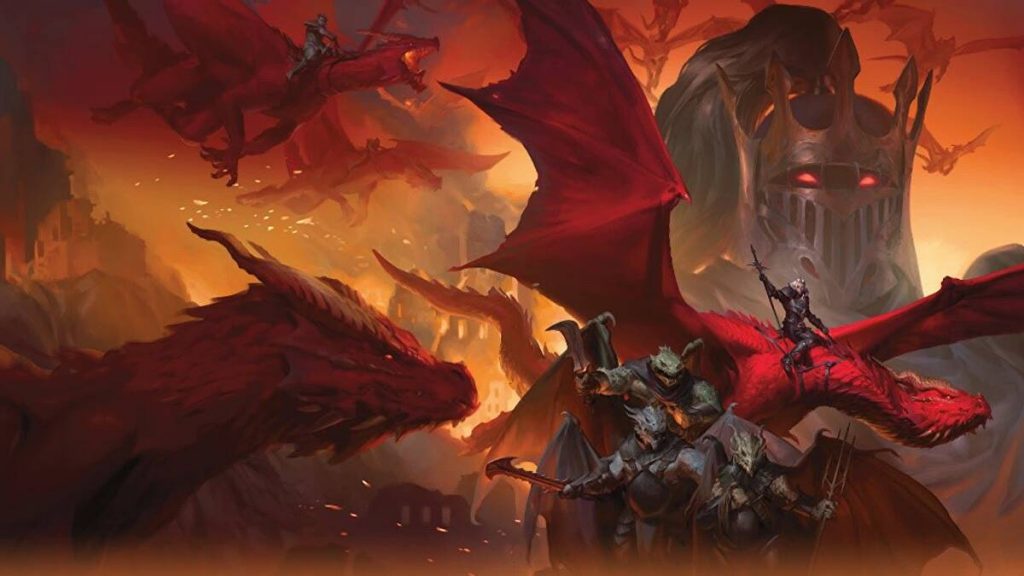
TL;DR REVIEW
The adventure starts strong but a series of ‘failing forward’ moments risk robbing the party of agency. A baffling plot for the lead antagonists is hard to parse, but lots of good lore and useful resources about Dragonlance means this book will be worth the money if you’re running a campaign there. If you’re not sure a war-torn setting rife with loss and failure (while the party is offscreen) is for your group, you can safely skip this one. If you buy the board game, the book is a value-add and you should probably own it. If you’re avidly anti-cop, anti-military, or anti-war, the themes in this book may irritate you, and you should skip it.
– DropTheDie, 2022
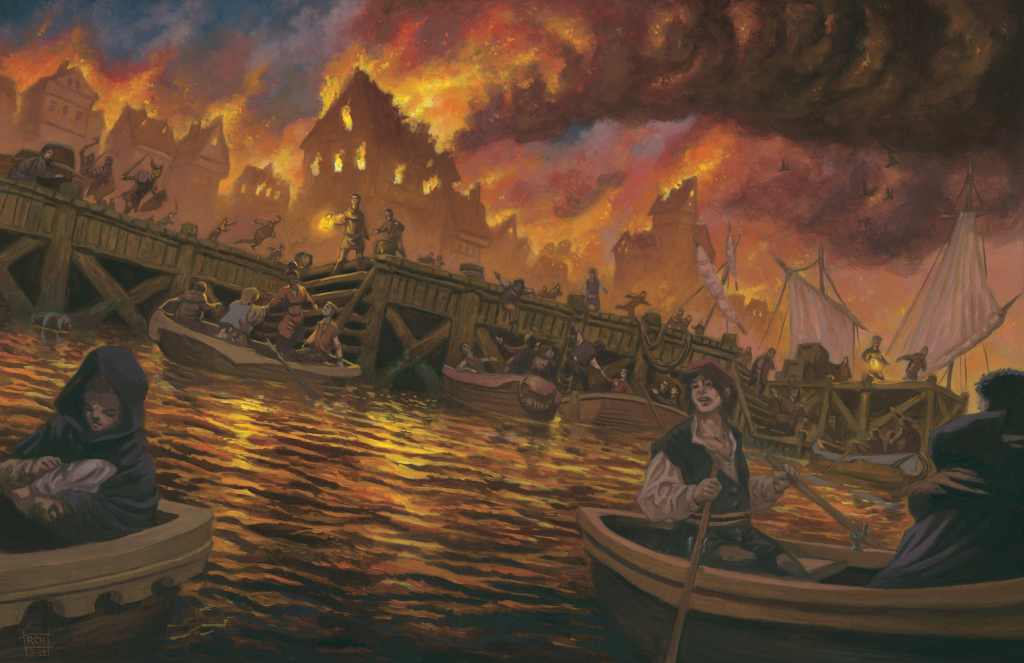
Chapter 0: History and Lore
The first 3 sections/chapters of this book make up only the first 1/5th of the page count (49ish pages), compared to the massive 137-pages invested to the adventure. Even still, the content that’s here is, I’d say, more valuable than the entirety of the adventure in terms of running campaigns set in Krynn.
History
The book begins with a brisk but workable overview of the history of Krynn. Many high-points of the setting revolve around horrific wars, catastrophes, and the departure of the gods from this setting (though they didn’t really depart, they’re just hands-off these days). The history of Krynn is shockingly brief considering it spans, to my best guess, 2,000-4,000 years of the world’s evolution. In that gargantuan swath of time, not a whole lot has changed due to the oppressive and catastrophic nature of eternal war that’s ravaged the planet. It’s amazing anything is still standing.
Lore
Lore, which I separate from history, gives an overview of information useable by the GM:
- a timeline of the most current horrific war
- daily life for people on Ansalon (the continent this adventure takes place on)
- the languages certain groups and peoples speak
- an overview of the gods of Krynn (A+ for not sticking them in an appendix)
- a useable calendar converter for the seasons/days of the week
- currency conversion
- a breakdown of regions that will see play in Shadow of the Dragon Queen.
I list these sections in a matter-of-fact way because in spirit, they are all marvelous additions to a setting book and make Krynn feel lived in and expansive, much like we see Faerun and the Sword Coast as it was tied to the Player’s Handbook and Dungeon Master’s Guide way back in 2014. But all of these sections are only eleven (11) pages of material. What they give us here is sincerely wonderful and I appreciate and enjoy its addition – the principle that steel coins are as valuable as gold because the war machine demands so much steel is quite marvelous.
But with each of these additions, I feel an absence that could have developed the sections further. By example, if steel is as valuable as GOLD, I’d expect to see a short section on trade goods or equipment in this war-torn land. Are swords cheap as hell because they’re all over the place now? Do people melt them down for coins, which are weirdly more valuable than the blade itself? (50 coins = 1 pound, a longsword is 3 pounds [probably 2.5 melted down] = 125 gp for a 15gp longsword?) You get what I mean, right? I’m not picking nits here, I love the ideas but I constantly felt like I needed a little more to really understand this place.
(More information is presented here about the Dragon Queen, but see my Adventure breakdown
for that bit – it’s… yeah, look at my summary in chapter 2)
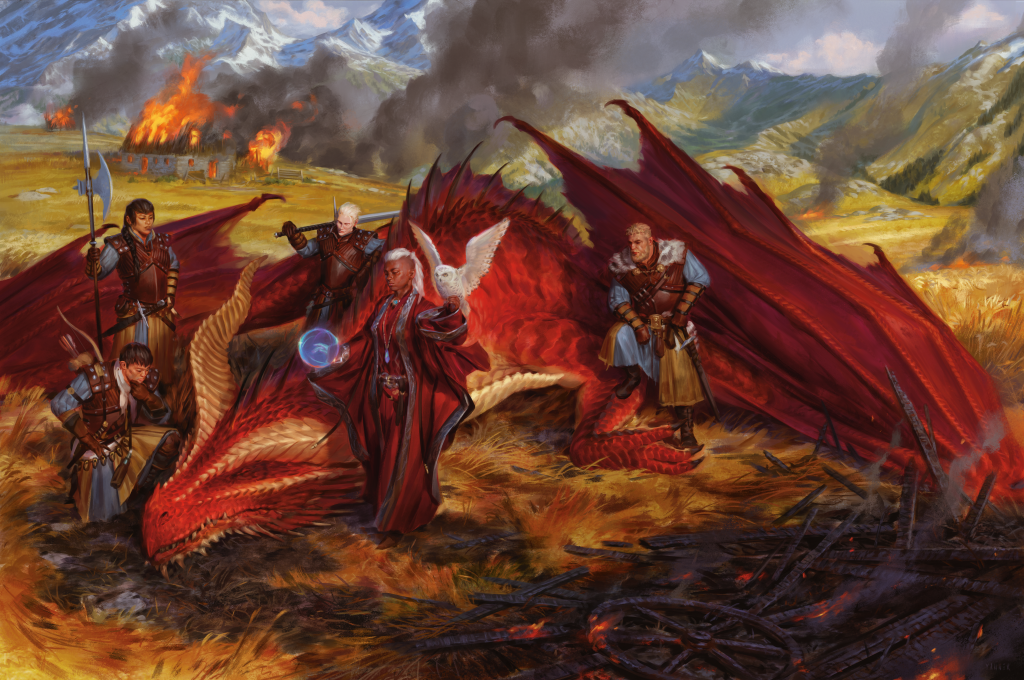
Chapter 1: Player Options
Primarily we get short write-ups as to where the races primarily congregate and what wars they waged and why. New additions in this chapter include: Krynn backgrounds and feats, Kender, and the Lunar Sorcerer. All the information here is pretty solid but not overly eventful, so lets focus on the new additions.
Backgrounds + Feats
Call your parents and explain to them how powerful these are when you’re done reading this review. I don’t care how long it takes, the world deserves to know. In Krynn, characters with any background have a considerable leg up over other settings in the form of a 1st-level feat (Skilled or Tough), a 4th-level feat (including 7 setting-specific feats, Alert, Mobile, Sentinel, or War caster). A Knight of Solamnia or a Mage of High Sorcery get instantly tied to the central conflict as well as the skill, language, equipment, and feature of other backgrounds found in the PHB or other setting guides. Juicy-woosy, there’s no reason you’d not take these if you’re playing in Dragonlance.
The largest downside, however, is that both a Knight and a Mage (and their feats, listed and rated below) are largely intended for token soldiers and spellcasters, so rogues, monks, warlocks, rangers, and other thematically different character concepts might not want to fit into the Knight or Mage boxes, but may have to if they have their heart set on a background-specific feat. I doubt it’s an issue for any table, but by-design it’s a little oversight that could have been fixed with a third more neutral background option like “Rebel” or “TikTok Influencer” or anything that fits between or beyond knight and mage.
- Adept of the Black Robes (8/10): Enchantment and Necromancy, this feat gives you a free 2nd-level spell (and free casting). It also gives a potentially gargantuan damage boost on high-level spells by sacrificing your Hit Dice. Great for Warlocks, okay for Sorcerers, not great for Wizards.
- Adept of the Red Robes (7/10): Illusion and Transmutation, this feat gives you a free 2nd-level spell (and free casting). Additionally, it gives you a 3-5 time per day automatic 10+ on an ability check or attack roll. Good for everyone, especially for you low-rollers out there.
- Adept of the White Robes (5/10): Abjuration and Divination, this feat gives you a free 2nd-level spell (and free casting). Plus, you can conjure a shield around an ally to absorb damage. You have to burn a spell slot, roll a number of d6s equal to that slot, then add your modifier, then subtract that number from the damage… So you may block 35 damage with a 5th level slot, or 10… you’ve got better stuff to spend your precious slots on. Okay for Wizards (especially abjuration), though.
- Divinely Favored (8/10): Tied to 4th level and to Dragonlance exclusively, this feat gives you anyone a free cleric cantrip, a 1st level spell slot once per day and two spells known – one warlock, cleric, or druid spell based on your alignment, and the spell augury. Free spells, free fairly hard to get spells, free castings. This is a no brainer for 99% of spellcasters. If your DM lets you play it anywhere, it’s a 10/10.
- Initiate of High Sorcery (10/10): The only feat not offered at 4th level, but it is tied to the other Mage feats as a prerequisite. Since it’s a prerequisite, you kind have to have it if you wanna move into the Mage’s dorm. Gives you a cantrip and two spells, which you can cast for free once per day, based on the moon you pick. Mandatory for Sorcerers and Warlocks who need more spells known/per day.
- Knight of the Crown (7/10): A Str/Dex/Con ability score increase plus the battle master’s Commander’s Strike 3-5 times a day as a bonus action. Mechanically decent, but uninspired.
- Knight of the Rose (6/10): A Con/Wis/Cha ability score increase plus the battle master’s Rally 3-5 times per day. Mechanically viable, but very uninspired.
- Knight of the Sword (7/10): An Int/Wis/Cha ability sore increase plus the battle master’s Menacing Attack but better 3-5 times a day. Mechanically decent, but like… what are we doing here?
- Squire of Solamnia (9/10): It’s a prerequisite for the other Knight feats, so it’s mandatory for those. It lets you mount a creature with 5 feet of movement, and uses the battle master’s Precision Strike but better 3-5 times a day. Mechanically very good, as it’s not wasted even if you miss, but… do they want to re-make the battle master or something??
Kender
Though the lore makes a clear point to separate the kender from halflings or gnomes, there’s not a lot of difference in them, mechanically, to the point I’m wondering why they exist other than for posterity’s sake. Canonically, an offshoot of gnomes, kender are fearless instead of brave, supernaturally curious, Small sized, human-like in appearance, amass trinkets and nick-knacks, and have a taunt ability that lets them curse at people to the point their enemies want to murder them.
I don’t dislike kender, but with no subraces and with only a quarter-page of lore, I expect the selling point of them is to be nostalgia or the taunt mechanic, both of which don’t really appeal to me, personally. Still – they’re unobtrusive and give more people a chance to play Small-size races without leaning into known tropes, so I support it!
Lunar Sorcerer
Infamously, at this point, the Lunar Sorcerer (and to a lesser degree, the Kender) had an Unearthed Arcana preview earlier in 2022 that was met with mixed feelings. Many believed that version of sorcerer to be quite lackluster and in need of improvement, mechanically. Since then, they’ve taken that feedback to heart and put it in a cardboard box labeled “feedback.”
The Lunar sorcerer does not get moonbeam. No, you cannot have an alright but extremely thematic 1st level spell, you suckers. Instead, it gets a buffed sacred flame and can embody one of three moons (full, new, and crescent). At higher levels this sorcerer can reduce metamagic cost of certain spells by 1 a few times a day, advantages or resistances based on your phase, and its capstone ability lets the sorcerer change its phase as a bonus action and blind, reduce the speed of enemies+turn invisible, or teleport once per day.
The real beef of the class is an expanded spell list (the sorcerer is woefully underdeveloped in terms of the spells known and its spell list), which gives it 5 new spells known depending on your chosen moon phase, which you can change every day. Full gives helpful buff spells; New gives damaging or debuff spells; Crescent gives sneaky and/or fringe-but-useful spells like phantom steed.
It’s thematic as hell but also pretty weak, mechanically speaking. I’d have loved for each phase to give flat bonuses/buffs instead of an entire changing spell list, which feels like it might be cumbersome to manage, but since sorcerers are clawing at their eyes for more spells, the expanded spell list ALONE is worth playing this subclass. It’s not like sorcerer subclasses are renowned for being very good, regardless.
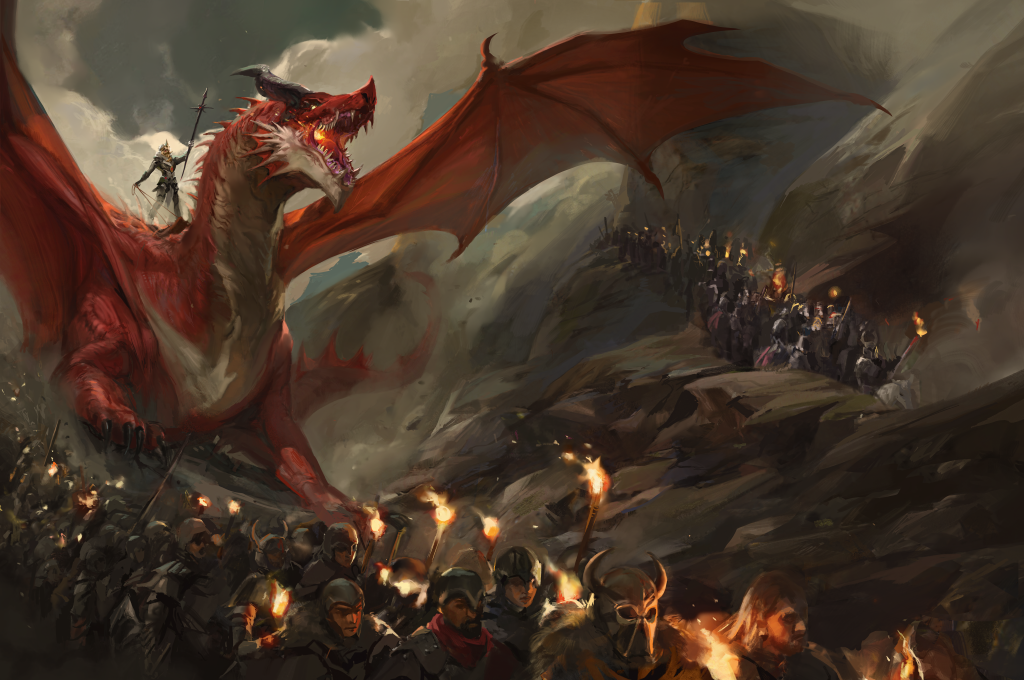
What’s even happening? + Chapter 2: Prelude to War
Content Warning – Stolen babies/eggs, child mutation/mutilation, possibly child soldiers
As the content warning suggests, things in Krynn are messed up. Here’s the quick and dirty rundown of the introductory information as best as I can summarize it:
A thousand years ago, Tiamat (called Takhisis in Dragonlance) was kicked out of Krynn for being horrifically miserable and causing a bunch of dragon-based wars. A society called Istar grew in military and magical power to the point their god-king wanted to become a deity, and the gods said “stop or we’ll slam a mountain into you and completely demolish the world.” Like most men in power when warned to stop, the god-king didn’t, and the gods of Krynn literally smashed a mountain into the kingdom of Istar and really really messed up the entire world for a long, long time.
After flicking a mountain at their problems, the gods left the world completely, and left the races that survived to clean up the mess themselves. It’s not gone very well. For 300 years there has been chaos, war, and endless vying for power in a godless world. Amid all that chaos, Tiamat (Takhisis) has wormed her way back into Krynn through devoted followers, took a little piece of Istar’s holy temple, hid it in a volcano, and started puppeteering her return by dominating all the remaining civilizations on Krynn with her very real swarm of young, adult, and ancient chromatic dragons.
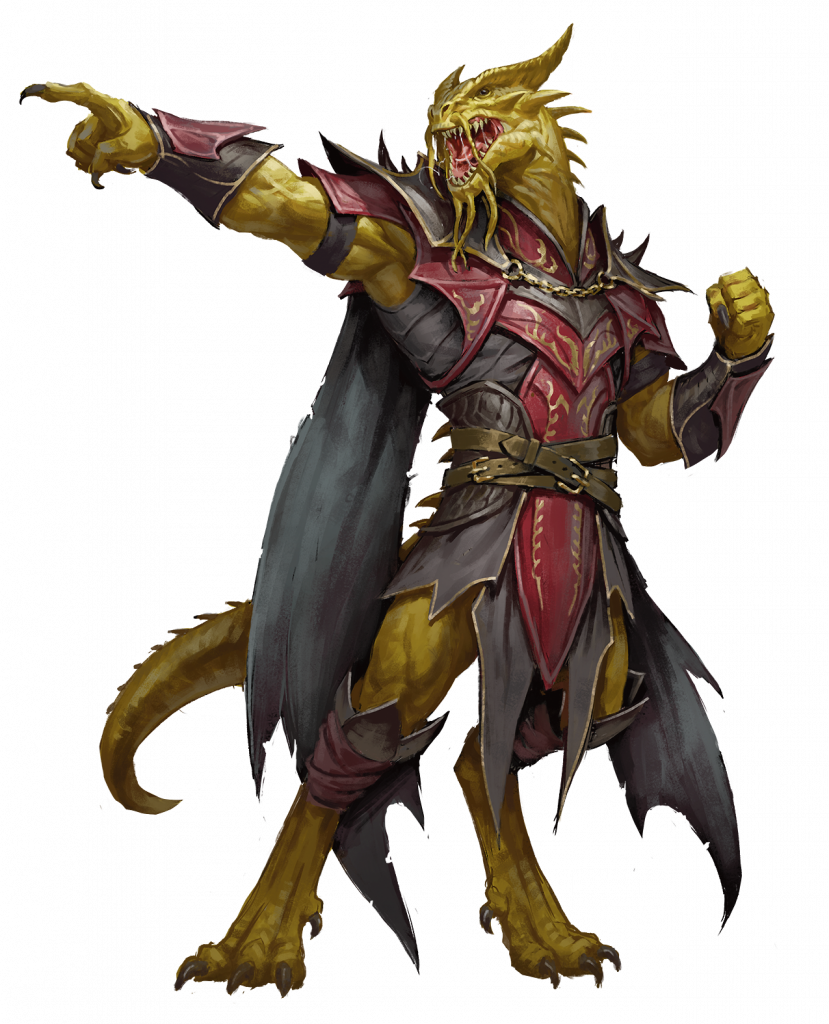
The adventure Shadow of the Dragon Queen starts just after Tiamat (Takhisis) had her chromatic dragons steal, presumably, every metallic dragon egg. The chromatic dragons used the kidnapped eggs to make the metallic dragons stay out of the war that was about to happen, then took the unborn metallic dragons and mutated them through magic and alchemy into humanoid dragon-soldiers called draconians, who really only exist to maul and mutilate anyone they come across, despite their advanced draconic intelligence.
Note: there are some of you out there who are like “is that all? pfft, that didn’t merit the content warning.” But I was blindsided, considering metallic dragons are the heroes of many D&D stories, to hear that their eggs were not only kidnapped but corrupted, mutated, and birthed immediately to make “bipedal monsters.” That’s well and truly f**ked by my accounting.
The Preludes
Before the adventure, the designers of Shadow of the Dragon Queen wanted to make a quick way to get rid of that pesky 1st-level, and offered 3 short encounters to get PCs to 2nd level, so the real story can begin. I feel these preludes would be best served as 1-on-1 adventures with players prior to a game, because they’re definitely written in that style (the “Eye in the Sky” prelude make no sense for the whole party to be there).
Firstly, the party meets a person named Ispin Greenshield, who is super likeable because they’re going to die off screen and their likeability needs to get the party to their funeral in Chapter 3. Then the PCs bump into 1 or more of the following prelude encounters:
- Broken Silence. A character has visions of corpses and finds one of the corpses’ holy symbols in their gear. That character then is whisked away to a divine temple, where a god greets them. When they leave, the temple vanishes.
- Eye in the Sky. The character(s) are headed to take the pre-entry exam for the Mages of High Sorcery at a tower called The Barb. Inside, they navigate an invisible maze before the tower shunts them out at midnight. If they succeed, they are given a scroll to deliver to an NPC in the adventure.
- Scales of War. The character(s) come across a farmer screaming about monsters. When the characters investigate, they’re thrust into a horrifically deadly encounter with two wounded draconians, which no one has ever seen before.
All-in-all, I’d say the preludes are fine, but I’d have much rather had all seven pages be an adventure for the party to go on together and have room to bond with one another without the fear of a TPK fighting dangerous wounded enemies (it’s CR appropriate, but with multiattack, each of the two enemies can dish out 8-11 damage per turn). For some reason, WotC is uncomfortable exploring the social or exploration pillars at level 1, even though it’s the perfect level to do so. Imagine if the party had to search an expansive battlefield for wounded, the whole time terrified one of these soldiers or creatures might be alive to threaten them. Or if the party had to bring word of the coming war to Vogler (the first location of the adventure) through a mountain pass or across a fast-flowing river – and how quickly they manage it determines how much time they have before the big kick-off of the adventure? I digress.
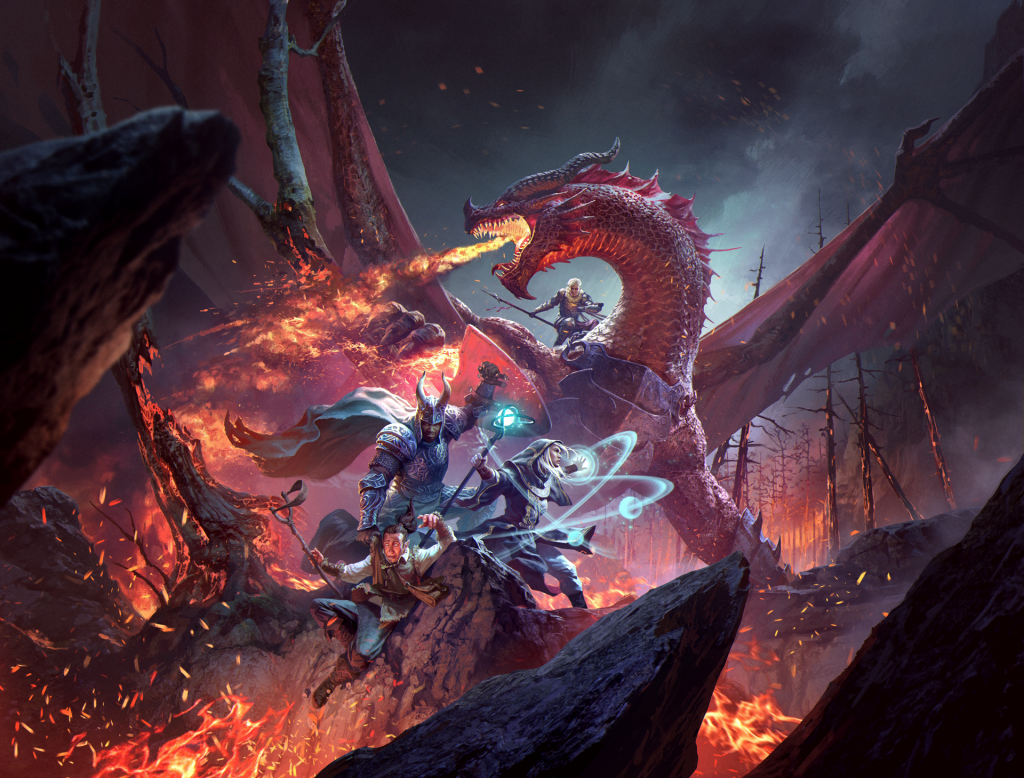
Chapter 3-7: Shadow of the Dragon Queen
The adventure, as a whole, is broken up into four parts, by my reckoning:
Part 1: The War Begins
Part 2: The Party Makes a Stand then Loses
Part 3: Leveling Up in the Wastes
Part 4: The Party Makes a Stand and Wins (but probably shouldn’t have)
If you want a spoiler free summary, the adventure starts out pretty strong, though the party suffer a lot of losses due to their low level, then they suffer even more losses due to their low level, then they have a chance to explore a bit in a really inhospitable place and find a lot of gear, which helps smooth out levels 5-10 in terms of power. In the end, they are horrifically, comically out-matched by their enemy and are handed the singular weapon that could spell their victory by happenstance, and fight an antagonist they don’t know to wrap up the adventure at level 10 or 11. There’s plenty to pull from, but mostly it’s set piece combat encounters with huge amounts of enemies, which may not be for every group.
Part 1: The War Begins
Chapter 3 and the first three-quarters of chapter 4 are solid and very well thought out. There’s a plethora of NPCs, locations, names, and a little sprinkle of non-combat challenges that make these chapters a pretty fair, if difficult, campaign for your party. There are combat encounters the party absolutely cannot win and several places where, if they are stubborn, they will more than likely all die. It’s important to remind them earnestly and honestly that they are low level compared to these enemies and need to act accordingly. A key example here is when an entire mercenary troupe attacks the starting town, ambushing the party unexpectedly. If the party tries to go toe-to-toe with these enemies without NPC help, they’ll be turned to paste. And that’s before they’re asked to go spy on the entire Red Dragon Army’s vanguard.
Still, the town of Vogler is interesting enough to engross low-level parties and the city of Kalaman is large enough and well-developed enough to keep your mid-level party interested in it. You can hide any number of NPCs, encounters, and side-quests in the cities to pad out your running time, but once you pull the cord on “war” – you’re on the clock and you cannot pause the war without robbing your campaign of much needed tension.
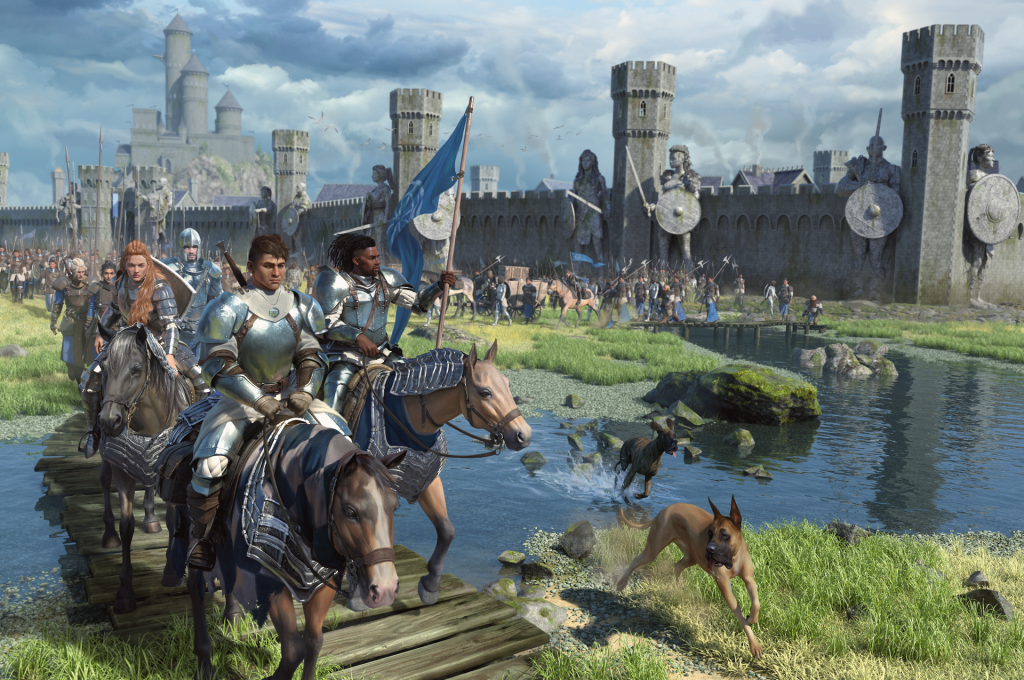
Part 2: The Party Makes a Stand then Loses
The last part of Chapter 4 does the ol’ “give the party a mission away from the city then ruin their lives while they’re away” gag. It won’t be an issue for most parties, I don’t believe, but it would stick in the craw of people who want their labors rewarded in the fiction of the campaign.
Reminder: spoilers. Essentially, the party is sent to an outpost and when they return, Lord Soth (an extremely powerful CR 19 death knight) and his cronies (a CR 14, a CR 8, and several CR 7s) infiltrate the city of Kalaman, which the party is now calling home, and murder its ruling counsel off-screen. The party return to find the carnage, probably kill an innocent knight being controlled by the CR 8 ghost, chase Lord Soth through deadly tunnels, hope he doesn’t turn around and murder them all as an action, then come back to the city under the wary suspicion of its entire garrison and population, who blame the party for the murder.
I have in my reading notes: “The end of Chapter 4 will be the end of many groups.” War is hell, but there is quite literally nothing the party can do to prevent this outcome on the story unless they somehow weasel 16 levels out of their DM before coming back to Kalaman, and that lack of agency can really chafe.
Part 3: Leveling Up in the Wastes
In part 3, comprised of chapter 5 and the start of chapter 6, the party are given control (along with the DM’s babysitter NPC, Darrett) over a force of several soldiers and set loose in the expansive region known as “The Northern Wastes” on their way to track down Lord Soth and see what he’s up to. This region is mostly sandbox, with rumors and scouting pointing out key locations and potential battles. At each of these locations, the party can gain some information about the threat they’ve been fighting for a while now, information about the greater world, and magical equipment.
Though the magic items in this adventure are scarce, and some of the most rare items are C-tier at best for their rarity, having new tools and control over their exploration feels like it’d make Part 3 the most enjoyable part of the adventure for clever or resourceful groups.
There’s not a lot of mechanical support for how to use the troops (outside of the Dragonlance board game standing in for combat), but DMs and players with a mind for battle strategy or tactics games will have a field day with making ambushes and navigating Dragon Army scouts, flash floods, and dangerous encounters like purple worms, manticores, and dinosaurs.
This exploration culminates in the party finding Lord Soth and company have traveled to a crashed flying city that has been unearthed, where they hope to bolster their army and have a really cool, if unneeded, flying fortress to maybe fling at their problems like the gods of old. The intro to Chapter 6 also marks the biggest turning point for those who wish to join the Mages of High Sorcery, which makes it a pretty big value-add in terms of establishing the party’s power-level.

Part 4: The Party Makes a Stand and Wins (but probably shouldn’t have)
Once the party find the (grounded) flying city in Chapter 6, the wheels feel like they start to wobble. This part of the adventure supposes the party is level 8, but feels as though it’s written for a party of 4-5 level 10 or 11 characters: murderous slaadi, young and adult chromatic dragons, bygone era curses, groups of five-to-eight draconian patrols that can signal for re-enforcements at any part of the city, powerful undead, genies, mummies – it’s a factory of threats in this place.
I’ve always said that level 8 is when the party’s power begins to creep up exponentially, by the time they’re 14th level, they can suffer demigod levels of punishment and remain unscathed, but with only a handful of magic items such as a dancing sword or boots of levitation, some of these encounters could be pretty raw on sub-optimized parties who have spent days if not weeks in the wastes, far removed from places they could resupply their adventuring gear.
The chapter culminates after the party reach 9th level and reforge the titular dragonlance (it’s mostly just a +3 pike or lance) with a battle against a CR 12 spellcaster and his cronies, then a battle against a CR 9 young blue dragon… who has, for some reason, been given the helm of this enormous and all-important flying city. Young blue dragons are scary, sure, but this is the combined plot of Tiamat (Takhisis), Lord Soth, an Archmage, and 3 of the 5 Dragon Armies – and it’s left to the devises of a young dragon. [Keep note of this, we’ll use it later.]
The party, if they manage to stop the flying city, DONT stop the release of a flying temple and army of dozens of undead dragons (cr 10 and cr 7) who are set free by Lord Soth.
The party races back to Kalaman through the wastes, somehow staying ahead of the flying citadel, the young, adult, and ancient dragons, swarm of flying undead dragons, and Lord Soth, to convince the city (who still blame them for the council’s murder still, I believe) that they need to make ready to repel an invasion. Luckily, the party is 10th level.
The party THEN repel the first wave of overwhelming forces, make their way to the flying citadel past the combined CR 97 swarm of undead dragons that guard it, through the tower full of ghosts, undead warriors, dragon army soldiers, and Soth’s entourage, to… find a magic mirror that will distract Soth long enough for the party to put out a brazier (prestidigitation, a wet blanket, or a firm shove will do), that causes the citadel to crash.
The party then fight the leader of the red dragon army, a CR 11 soldier named Kansaldi Fire-Eyes (who they have never seen or met before) astride her Huge-sized… CR 10 young adult dragon [see, we used it later.]
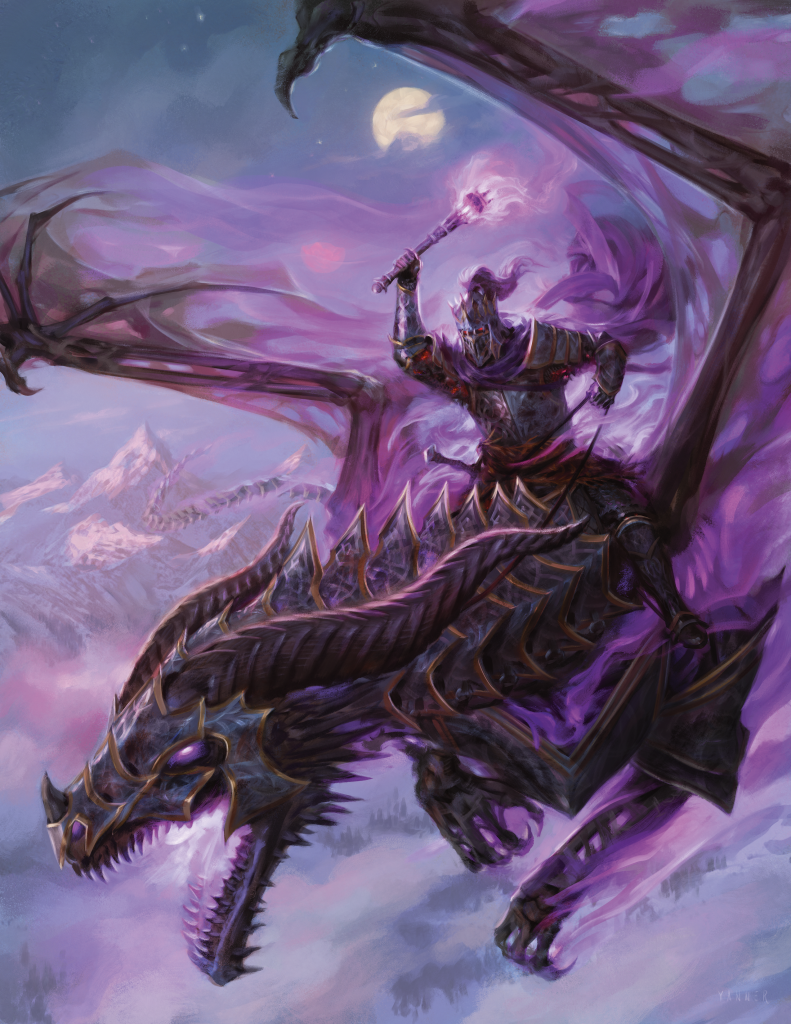
I cannot help but imagine this adventure was written to end at 15th or even 17th level for the party, because facing off against a CR 11 atop her adult CR 17 red dragon is perfectly a Deadly, but manageable encounter for those levels. The fight with Soth would have been 4-5 level 16s against a powerful CR 19 death knight, but they would have had the mirror to draw Soth’s attention and give them the edge to overcome him in a battle and destroy the citadel.
Instead, the party never face off against Soth, fight a dragon with enough hit points to survive maybe 3 high-level spells and a few arrows, and a rider that, if falling with her dragon, would take half her hit points in damage when she hit the ground.
It just doesn’t feel like the scope and threats in Part 4 gel with the rest of the adventure, as they seem to skyrocket in chapter 6, then the breaks get pumped BIG TIME at the very end of Chapter 6 and Chapter 7, where verisimilitude (that adult or elder dragons would be put in control of the ancient powerful relic and made to safeguard the general of the Red Dragon military effort) is twisted to make for a winnable combat encounter.
The Back of the Book
We’re nearing the end, people, bear with me, because this will be brief, as the end of the book is extremely brief.
Gear and Magic Items
This chapter is pretty sparse, as there is only 2 mundane items (a parachute by another name and a walkie talkie by another name), 2 siege items (a cool dragon-style battering ram and a ‘gnomeflinger’ used to hurl people to their death more often than not), and 4 magic items. Here is my cynical but honest magic item review:
- Dragonlance (2/10): Legendary, requires attunement, is a fringe weapon type [pikes or lances], and is just a +3 weapon that deals 3d6 force damage to specifically dragons and, on a hit, can make a dragon ally use its reaction to make a melee attack, so long as it’s within 30 feet of you. A dragon slayer longsword gets you 2/3 of the way there, is rare, and does not require attunement. If you are, very specifically, a paladin or battle master fighter riding atop a dragon fighting against other dragons, this weapon is a 9/10). Everyone else will not use this.
- Flying Citadel Helm (0/10): you will not and can not use this in this adventure without your DM specifically telling you on discord to “cast suggestion on the dragon and tell it ‘give’.”
- Kagonesti Forest Shroud (9/10): It’s a cloak of elvenkind that gives you a misty step once per day and advantage on attack rolls at the end of the teleport. Requires attunement, or it’d be a 10.
- Mirror of Reflected Pasts (1/10): This is a MacGuffin the party didn’t know they needed until they got it. In the initiative order with Soth, this is a 10/10 best seller, leave a 5-star review. Otherwise, it’s a very rare item that requires attunement and gives you a DC 15 save or be paralyzed until something comes between you and the mirror (or you save at the end of your turn).
Friends and Foes (Bestiary)
With a large roster of undead and monstrosities as well as several humanoid enemies of various CRs, the bestiary is pretty good. 22 new entries, and many of them seem a bit more powerful than standard Monster Manual monsters of the same CR. I think this is a value-add to most tables and the art is stellar, as always.
Undead Dragons, Dragonnels (dragons but more like wyverns in power level), and the new soldiers will probably see a lot of play.
Sidekicks
11 new sidekicks with rules from level 1 to 11 make this another value-add, especially for gaming groups who might lack concurrent players. These seem well thought out and don’t outshine the players, so adding 2-3 of these to the roster of background characters in your group could be a great move, given how dire some combats are in this adventure.
Story and Concept Art + Map
The few pages of art are great, but I’d have much much much preferred a 3-page index for where DMs could find what inside the adventure, particularly magic items, which are historically easy to miss in these adventures.
The map at the end of the book is extremely well done, bright, and absolutely lovely. I know some people will have this one framed on their wall, in due course. A+ on the map, sincerely. If you can swing getting this book, the physical map at your physical table will be a wonderful addition for battle strategy and giving that feeling that the players are marshalling their forces and in a time of war.
If you can find little dragon and knight chess set or use painted busts to represent the armies/forces, having your NPCs slide them around in real time while explaining scouting reports would be fantastic.

Overall
You probably should look at the start of this review again and realize that I praised several things before you paint me as a dragon-hating monster. I think most of this book is extremely solid! The introduction is great, there are thematic character options and lesser-considered details about the world of Kyrnn. The prelude to war is a bit weak, all things considered, but chapter 3 and 5 are great, as well as most of chapter 4 and 6. A robust bestiary and great map help sell this as a book most avid D&D fans should own.
The adventure holds a central theme and tone from start to finish which really works in Shadow of the Dragon Queen‘s favor. Utilizing the board game to handle otherwise difficult-to-run mass-combat in 5e was a good (and I’m sure profitable) venture, too. I also think this book has the best layout in D&D 5e history with splendidly gorgeous chapter introductions that are just as pretty as they are useful.

Where the book falls on its face, hurling the newly bought groceries over its head while comically squawking “MY FACE,” is in the final pages of Chapter 4, where all character agency is robbed and the party are made to look like ineffectual fools, and Part 3 (as listed in my review) where it seems the designers couldn’t quite manage the balancing act of delivering on their promised threats and keeping those threats within the tier of play the adventure is set in.
With some re-tooling adding some narrative thrust into Chapter 5 (when the party is meandering around The Northern Wastes), I think Dragonlance: Shadow of the Dragon Queen could be quite an interesting, serious, thought provoking, and challenging campaign. As-written, though, it just doesn’t live up to the promises it made in early chapters and forces failure onto the party 3 times with only marginal successes to sooth those wounds.
Bonus: Lord Soth’s plot
This summary is for comedic effect. From Lord Soth’s perspective, the entirety of Shadow of the Dragon Queen reads thusly:
Tiamat (Takhisis) summoned me and told me to go get a scepter from beneath some crappy city and kill a room full of guys. I did that and took the scepter to a city she told me could fly. Apparently, it’s powered by dragon graves, which is pretty metal. The city broke apart when that dragon that was flying it died, I guess, but I got a lot of undead dragons and a floating temple for my trouble at least? Is that a mirror? Woah, I can see my wife in here, dude. Didn’t she die like 300 years ago? Oh wait, she’s dying in the mirror, that sucks. Oh wait, that’s me killing her – bruh, don-
Lord Loren Soth, Knight of the Rose (supposed)
So I woke up reformed in the ashes of my ancestral home. Apparently I watched my past self in that mirror until the citadel crashed, so that’s a bummer. I guess the Red Dragon Army is scattered or whatever?


Review by JB Little, Follow me on twitter for more “useful” information.
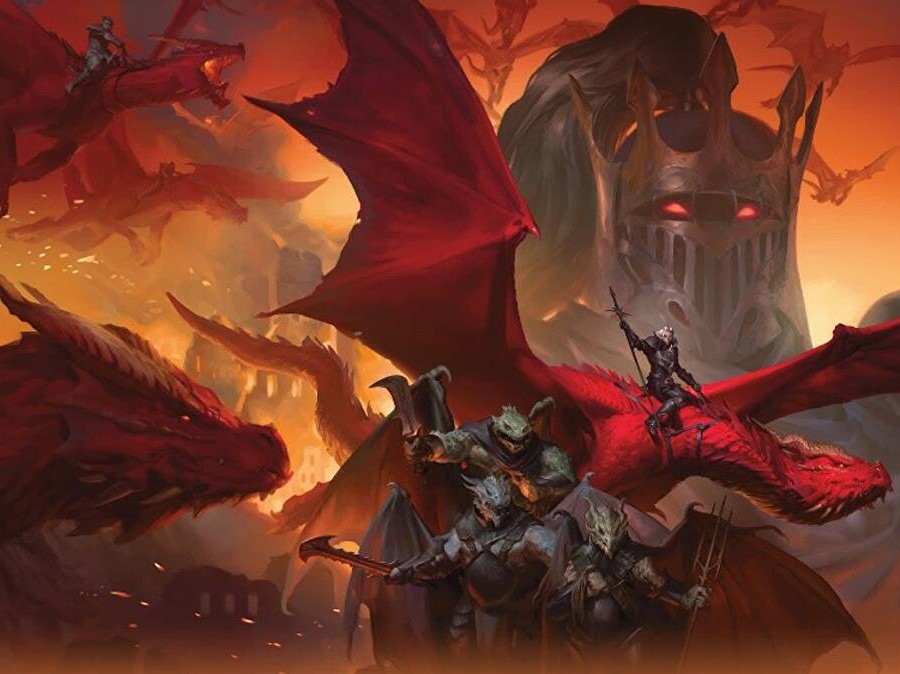
I will never understand the toxicity of some people. Even where I have perhaps occasionally felt differently about certain products, I have always appreciated your honest, thorough, reviews. I, for one, find them super helpful and insightful. I’m glad to have seen this review, and that you posted again. Thank you!!
I’m so sorry I didn’t see this earlier, thank you so much for the kind comment! It’s all worth it if I can help just one person (in this case, you) decide where to spend their hard-won money. Thanks so much for reading. Truly.
I forgot to reply to this – and despite it being multiple years later, I still appreciate the kind words.
Hopefully I can pivot toward reviewing more content for you and other people who found my insights useful – even if they completely disagree with me, the hope is they can still find something they will enjoy by knowing my opinion on it, after all.
The customer is always right in matters of taste – no matter how much I enjoy plums and detest pears, someone allergic to plums who grows pears will never agree, but at least we know where one another stands.
Haha, well, very true, good way to look at it! And if you do put out more, I’m sure I’ll enjoy reading about it too. Your reviews have always been helpful in making informed decisions.
I absolutely loved the insights you provided on Dragonlance: Shadow of the Dragon Queen! The way you broke down the character motivations and the impact of the setting really deepened my appreciation for the story. I can’t wait to see how it all unfolds in the upcoming sessions!
Thank you so much. The book certainly had its ups and downs as I read it, but I really am rooting for home games to give themselves space to really lean into the lower-magic, higher-danger design of the setting. I hope you all enjoy it.